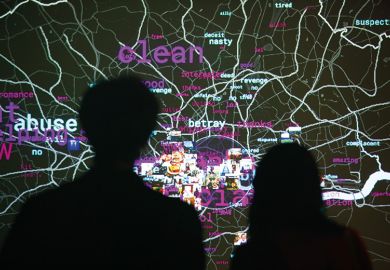In this book, the French historian Alain Corbin, author of fascinating social histories of the emotions and the senses, takes on a subject that unites these areas of interest. A History of Silence does not quite live up to its title, being less a history than an omnium gatherum of how (mostly European) writers, artists and thinkers have made sense of silence.
Corbin certainly has an eye for instructive detail and an ear for compelling quotation. I especially liked Maurice Blanchot’s description of writing as “a sea wall of paper against an ocean of silence”, and Eugene Ionesco’s observation that “words stop silence from speaking”. The book brims with ideas: on painting as “silent speech”; writing as the interruption of silence; the cruel silence of God; and the gravid silence of forests, dead-calm seas and snowfall.
Corbin’s argument is less persuasive. He begins with the assertion that ours is the age of noise and that “the fear, even dread, caused by silence has intensified”. But is this actually true, as opposed to intuitively true? Like Corbin, I love silence, share some of his nostalgia for it and hate the fact that it now has to be cordoned off, in libraries and on trains, into quiet and silent zones. And yet, as many of his examples suggest, people have long feared silence and tried to dispel it. All human tribes (and many other herd animals) find silence unnerving, which is why we need the phatic communication of small talk, in which words serve merely as social glue to dispel the awkwardness.
Has silence really been vanquished in the modern world, or just displaced and redistributed? The countryside, where fewer birds sing and fewer farmworkers shout in the fields, may be more silent than ever. Mobile devices have invaded public spaces with their annoying ringtones and earphone leakage, but they have also brought us the sullen silence of texting. And our ancestors did not have the benefit of noise-cancelling headphones, although their invention may say something about the scarcity value of silence today.
Corbin does not dwell on this unequal allocation of silence, nor on the ways in which silence may be a demand made on others. He touches briefly on the military’s idea of noise as subordination – “silence in the ranks” – but not on the gendering of silence, that ideal of chaste feminine reticence that goes back at least as far as Saint Paul and was meant to stop women participating in public life.
Rather like Sara Maitland’s A Book of Silence (2008), a similarly stimulating compendium sounding off in all directions, Corbin’s study feels strangely voluble given its subject. He is so taken with the allusive potential of silence that he always seems eager to tell you more. The quotes and themes pile on so fast that he has to link them with abrupt about-turns such as “we now come to” and “let us now return to”. His point sometimes struggles to make itself heard above the chorus of other scholars’ voices. I enjoyed listening to what this book had to say, but wondered if, beyond the noise of its impressive erudition, there might be something more quietly profound to say about silence.
Joe Moran is professor of English and cultural history at Liverpool John Moores University.
A History of Silence: From the Renaissance to the Present Day
By Alain Corbin; translated by Jean Birrell
Polity, 160pp, £50.00 and £14.99
ISBN 9781509517350 and 7367
Published 20 April 2018
Register to continue
Why register?
- Registration is free and only takes a moment
- Once registered, you can read 3 articles a month
- Sign up for our newsletter
Subscribe
Or subscribe for unlimited access to:
- Unlimited access to news, views, insights & reviews
- Digital editions
- Digital access to THE’s university and college rankings analysis
Already registered or a current subscriber?










